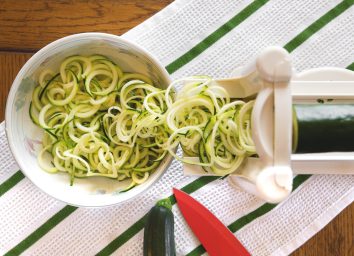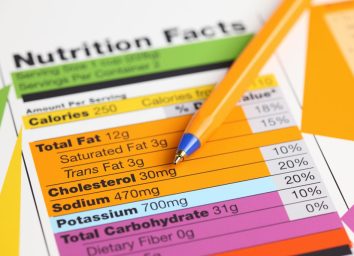30 Ways to Eat More And Weigh Less
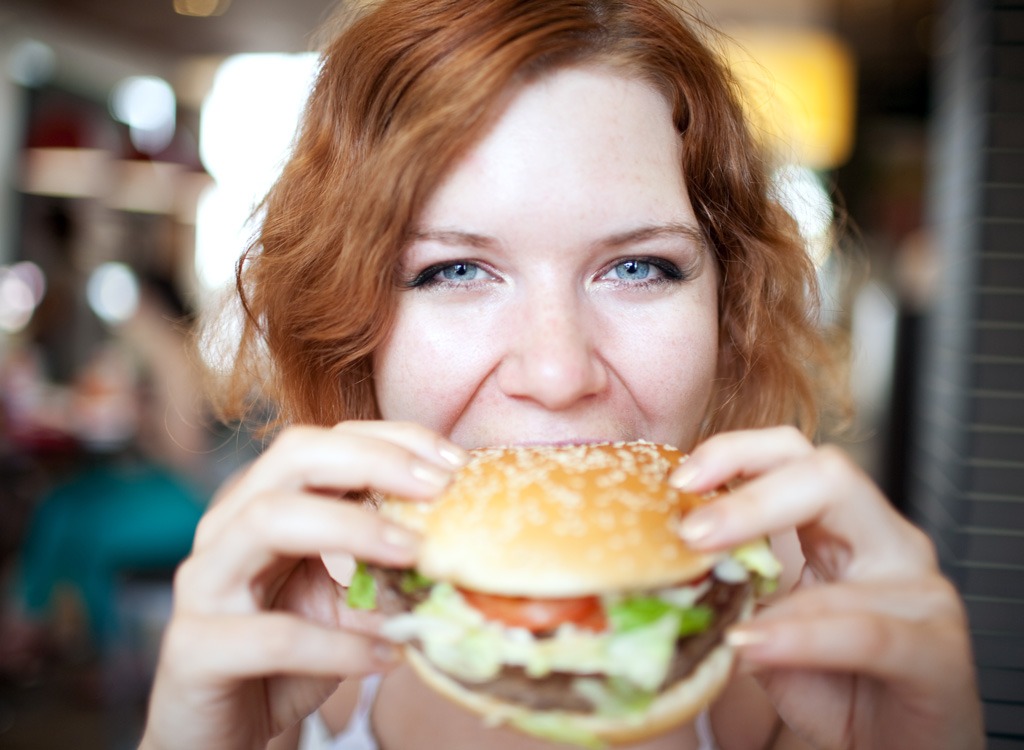
I came home to find my roommate, Rachel, sitting motionless at the kitchen table. It didn't take long to realize why she looked so miserable. Her usual plate of meat and veggies was replaced with a small bottle of murky green juice. She was trying to figure out how to lose weight—again.
"I can't do this," she confided to me. "The last time I did this juice cleanse, I was so tired—and constantly ravenous! But I don't know what else I can do to lose 10 pounds."
I knew exactly where Rachel was coming from. Many of us don't really know how to lose weight and think the only way we can is either by employing these week-long cleanses or absurdly calorie-restrictive diets. And while these tactics offer short-term fixes, they rarely result in lasting success. In fact, if you're too restrictive, you'll not only slow down your metabolism, but you're also likely to become so fed up (and hungry) that you'll throw in the towel—or worse, binge on an entire carton of ice cream in a single sitting.
So what did I tell Rachel? "Fill up your plate and embrace eating!"
Sound too good to be true? Okay, there is one catch. Filling your plate with chips and cookies isn't going to cut the belly fat and is not how to lose weight. But when you load up your plate with the right kinds of foods that keep you satiated throughout the day, you'll start to kick those pesky pounds to the curb. Losing weight should focus less on what you can't eat and more on which nutrient-dense foods you can eat. Following the tips below will ensure that you can sit down to a plate filled with slimming, delicious food that won't leave you wanting more. And while we're on the topic, find out the 20 Reasons Why You're Always Hungry, too!
Start Crowding Out
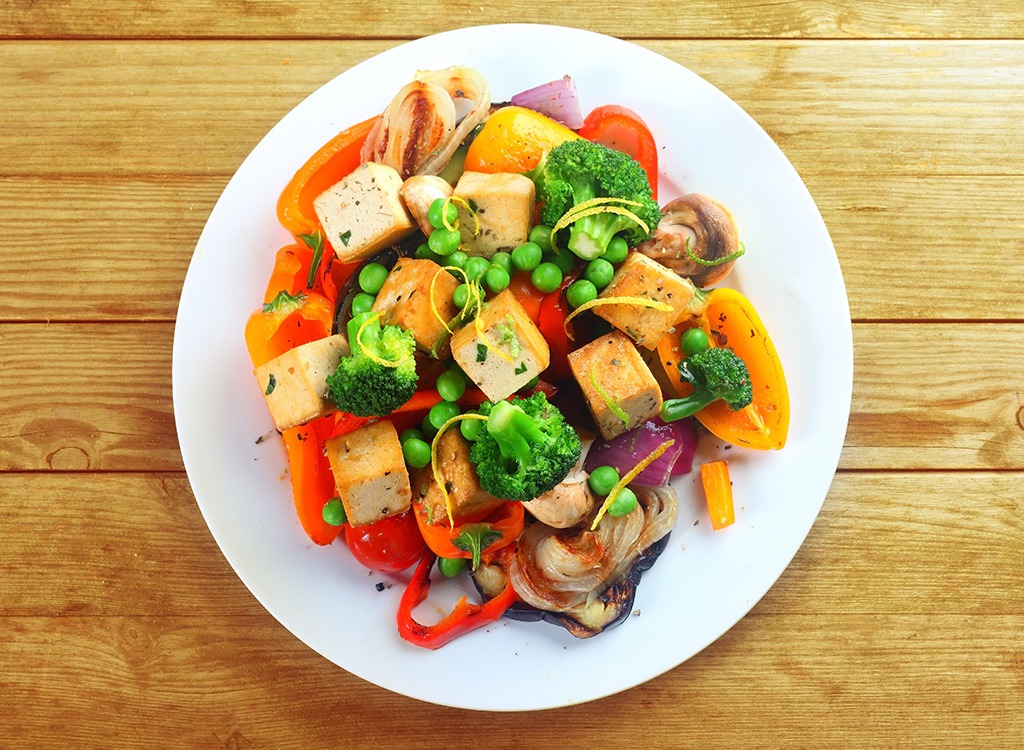
This nutritionist-recommended strategy is a simple one. Before you reach for the fried chicken, load up your plate with healthy, low-cal foods (like veggies). That way, you won't have as much room for those calorie-dense options. Follow this plan and you'll be eating more of the fiber-filled healthy foods that curb those post-dinner hunger pangs you're used to after eating a nutrient-lacking meal.
Look For Volume
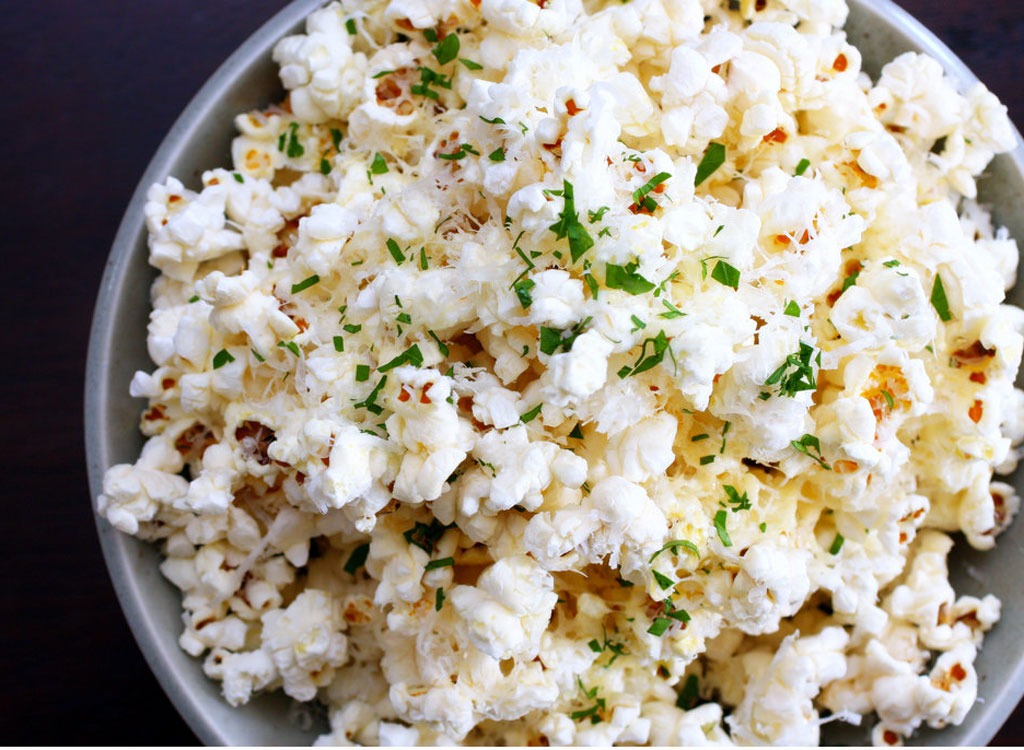
No, this isn't a tip for styling your hair—we're talking about snacking on air-popped popcorn and learning how to lose weight! A recent study found that dieters reported feeling more satisfied after eating six (yes, six!) cups of popcorn than they did after munching on one measly cup of potato chips. Sure, it makes sense that you'd feel fuller eating five more cups of something, but here's the kicker: those six cups of popcorn totaled 33 percent fewer calories than the chips! Since popcorn is so low-cal, you can down a much larger serving while still saving calories.
Eat More Hydrating Foods
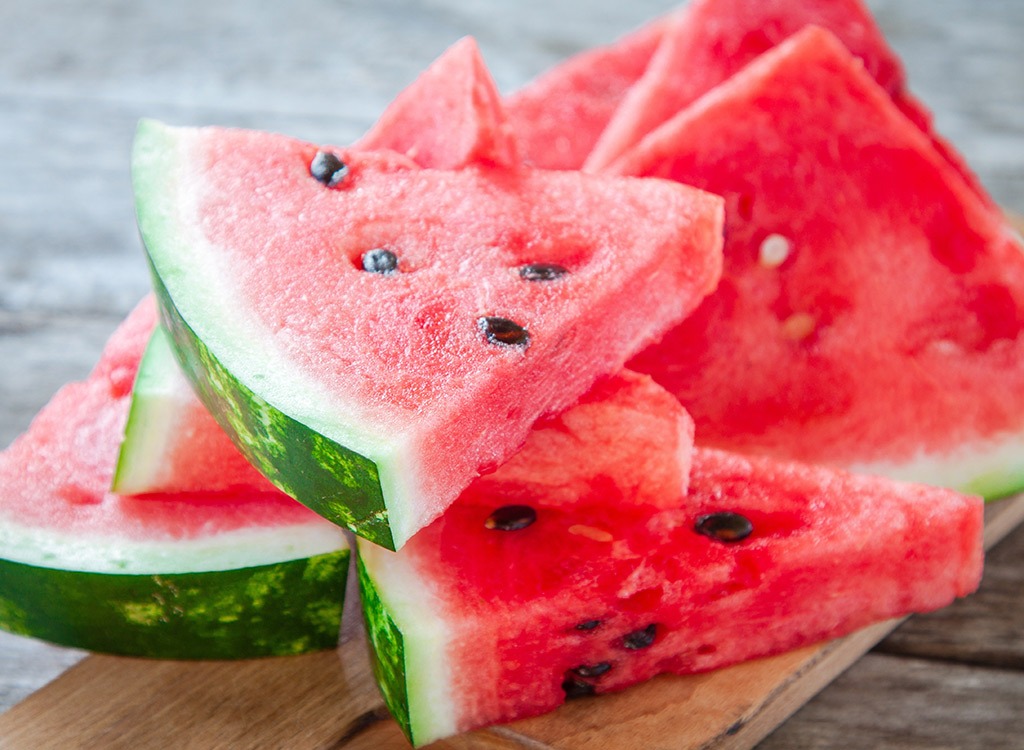
It's probably not the first time you've heard us say it—and it certainly won't be the last—but often times, we mistake thirst as hunger because the same part of our brain controls both functions and sometimes it gets confused. Sure, you can drink some detox water, but you can also kill two birds with one stone by snacking on a hydrating food like watermelon, cucumber, strawberries, or cantaloupe. The water will help you stay hydrated, and the combo of H2O and fiber will also fill your tummy up and keep you full. And did we mention they're also low in calories? Get munching!
Have More Snacks
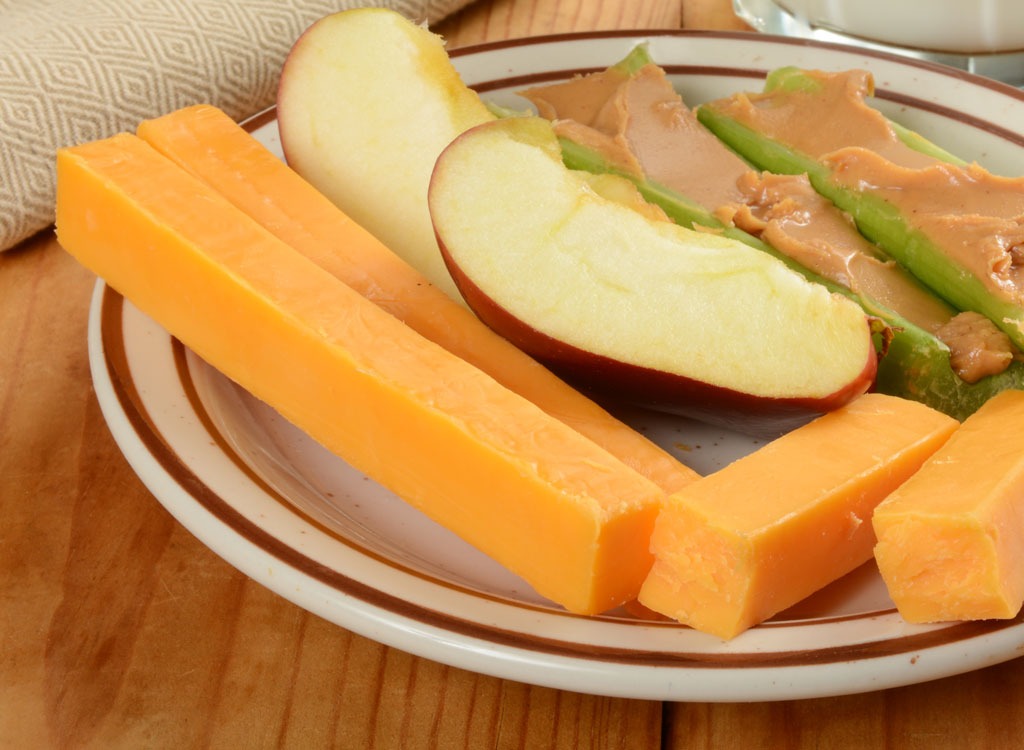
Forget the "three square meals a day" thing. Experts have found that consuming a 100 to 200 calorie snack between meals can help to reduce binging at meal times by keeping blood-sugar levels stable and your metabolism humming. Not eating when you're hungry can lead to overindulging when it's time to nosh, which makes for an abundance of calories that your body doesn't need to use up so it ends up storing them as fat.
Don't Be Afraid To Nibble at Night
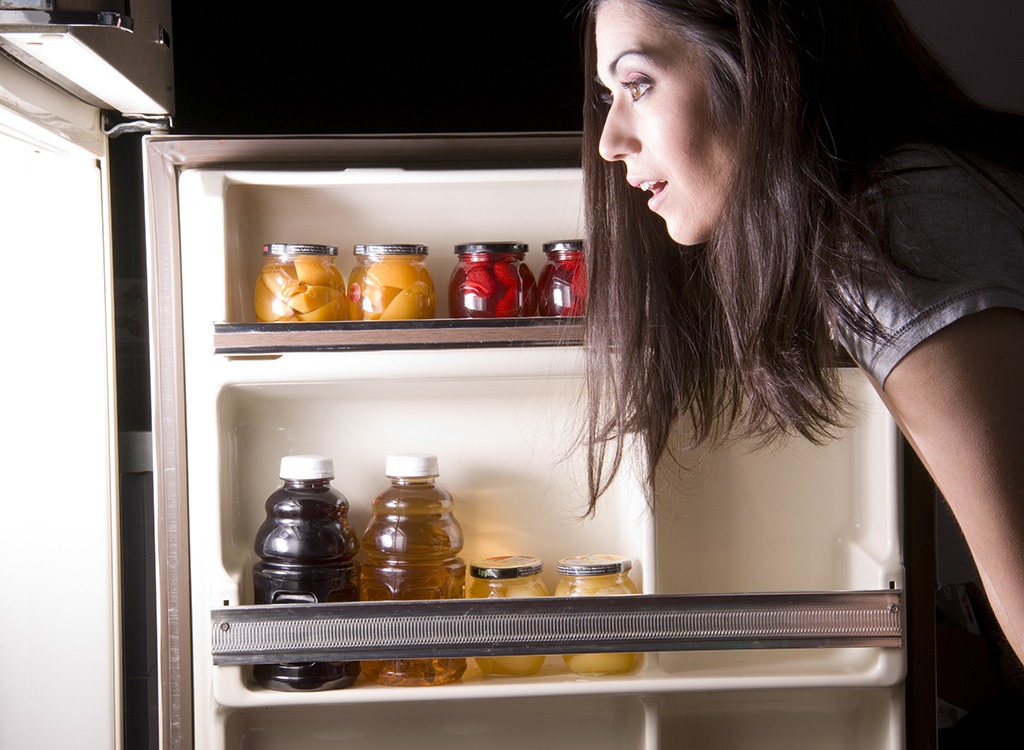
Let's dispel with that nasty rumor once and for all: nighttime snacking won't sabotage weight loss. In fact, when you snack on one of these best foods for sleep, you can actually catch some Zzz's more easily. And since getting a better night's sleep can help your body regulate hunger hormones better, you'll be furthering your slim down progress with your evening eats.
Eat Breakfast!
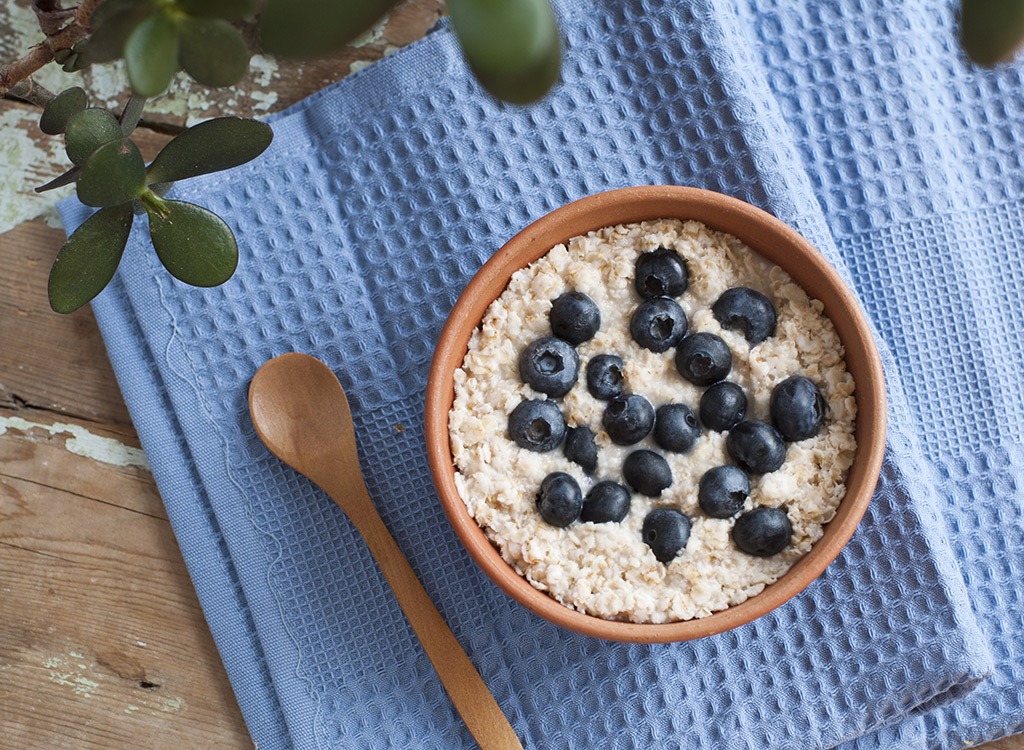
Don't meander through your mornings hungry; A study published in the journal Obesity Research & Clinical Practice found that those who nosh in the A.M. maintain steady blood glucose levels throughout the day whereas those who skip breakfast experience big surges and drops in blood glucose. Translation: when you skip breakfast, you'll have more ravenous hunger pangs throughout the day than if you grabbed a container of Greek yogurt or jar of overnight oats in the morning. In fact, one Canadian study found that those whose diets were supplemented with the same insoluble fiber found in oatmeal had lower levels of the hunger-inducing hormone ghrelin.
Swap Out Sweets for Fruit

Counter those sugar cravings for cookies, soda, and juices with a good-for-you treat like an apple or berries. Not only are these sugar-filled snacks often lacking in belly-filling fiber, they also are much higher in hunger-inducing simple sugars—which means you're twice as likely to be left with a rumbling stomach after indulging.
Get Your Grain On With Bulgur
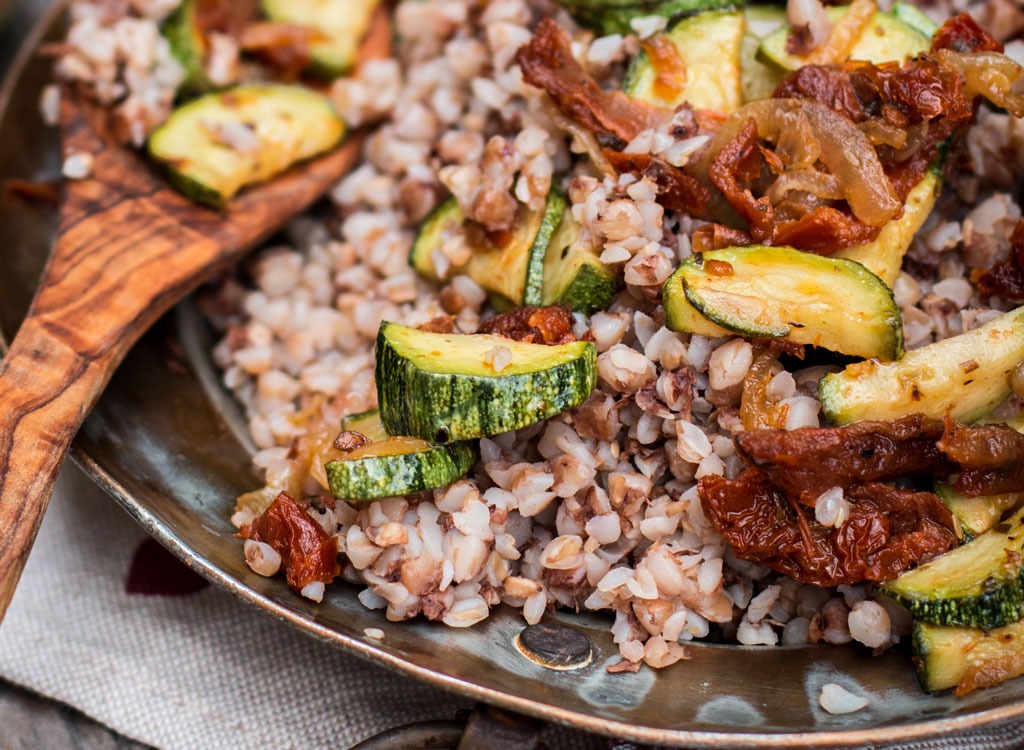
It's a fact: people feel more satisfied after consuming a larger amount of food. So why not switch up your side of quinoa and grab a bag of bulgur (the main ingredient in tabbouleh salad). Why? Cup for cup, bulgur has 70 fewer calories for three more grams of belly-filling fiber. So, not only can you eat more of it without exceeding your typical caloric intake, but it will likely keep you more satiated than quinoa, too!
Load Up On Fatty Fish
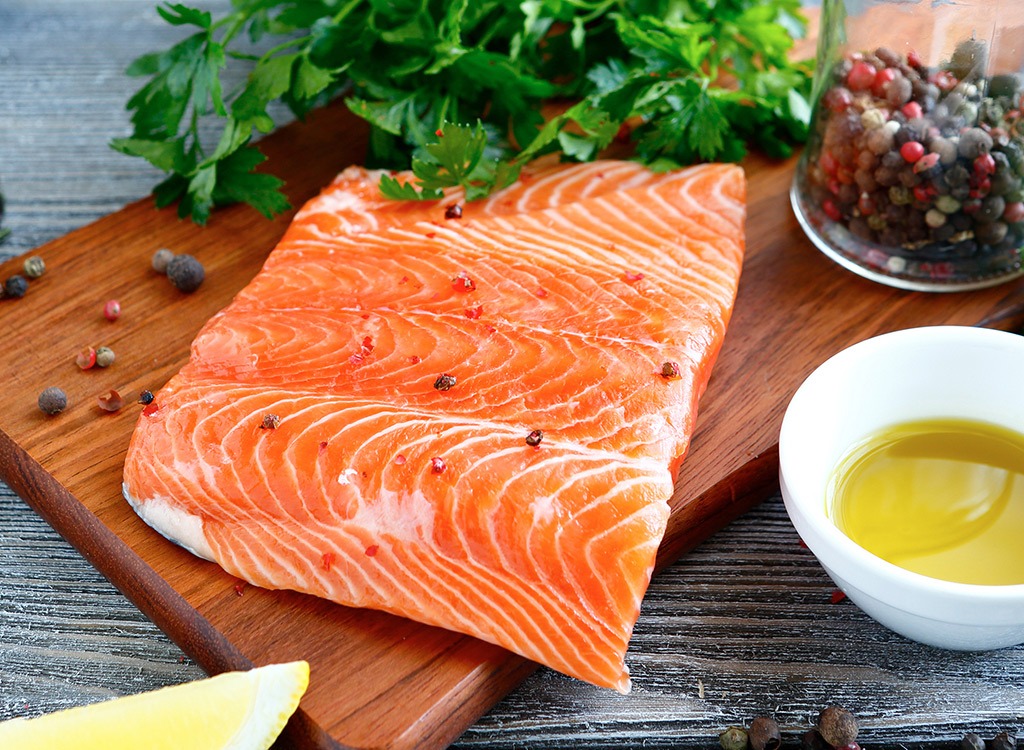
Wild salmon, mackerel, halibut, and pollock—these fish all have one thing in common: they're full of omega-3 fatty acids. These healthy polyunsaturated fats attack excess inflammation by increasing levels of adiponectin: a hormone that enhances your muscles' ability to use carbs for energy, boosts metabolism, and burns fat. Eat more fish, and you'll be furthering your slim-down efforts. In fact, a study published in the journal Food & Function found that women who supplemented their diet with omega-3s lost nearly 3 percent more weight over the course of 8 weeks compared to those who took a placebo. It might not seem like much, but for someone who weighs 167 pounds, that's 5 pounds!
Turn Sandwiches Into Salads
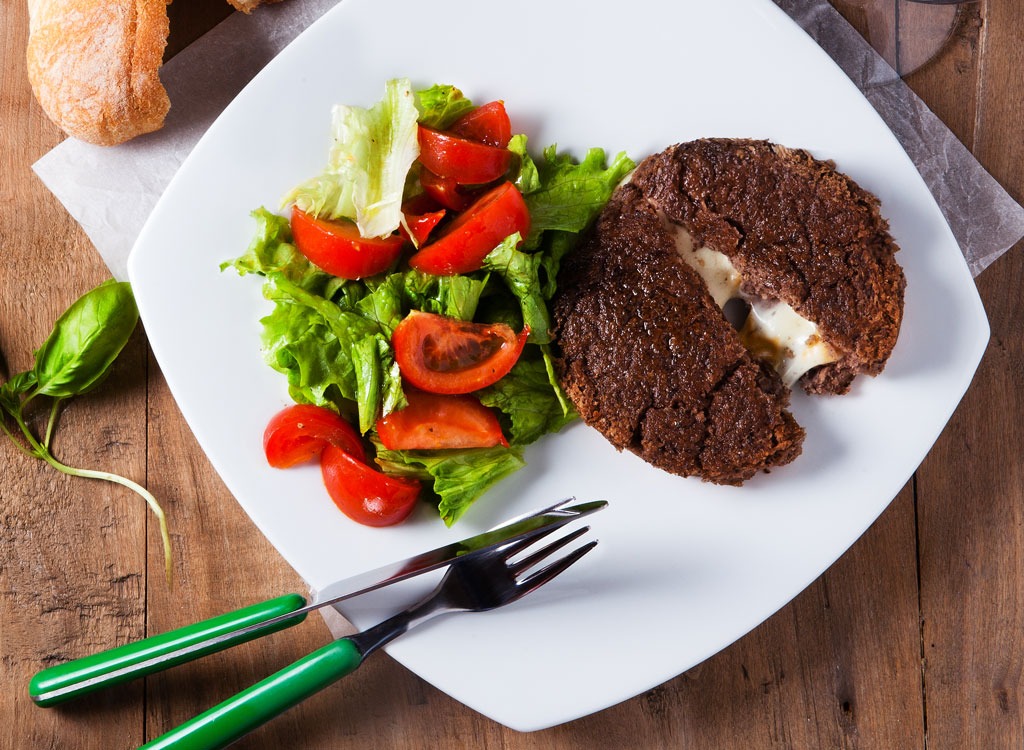
Ditch the calorie-dense potato bread and load up your plate up with fresh, green veggies. Doing so means you'll save an average of 120 calories and 20 grams of carbs, but you'll be reaping the satiating benefits of a fiber-filled, hydrating veggie! This tip is one of our favorite ways to cut calories.
Pop Some Pistachios
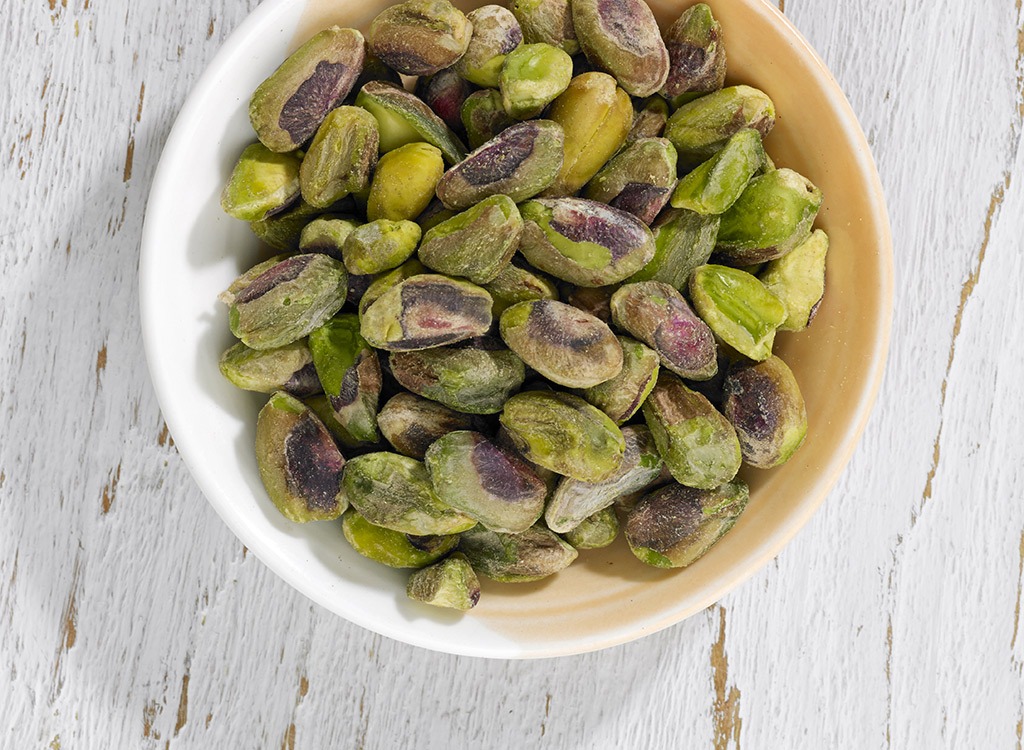
Sure, all nuts can help you lose weight, but the pistachio, in particular, stands out from the pack. That's because the little green guys are one of the lowest-calorie nuts out there, so you'll get to eat more of them. A 1-ounce serving equals 49 pistachios, while a mere 22 almonds set you back the same number of calories. Because you'll likely eat fewer than 49 pistachios in a sitting, you'll save yourself calories when you choose this nut.
Up Your Calcium Intake
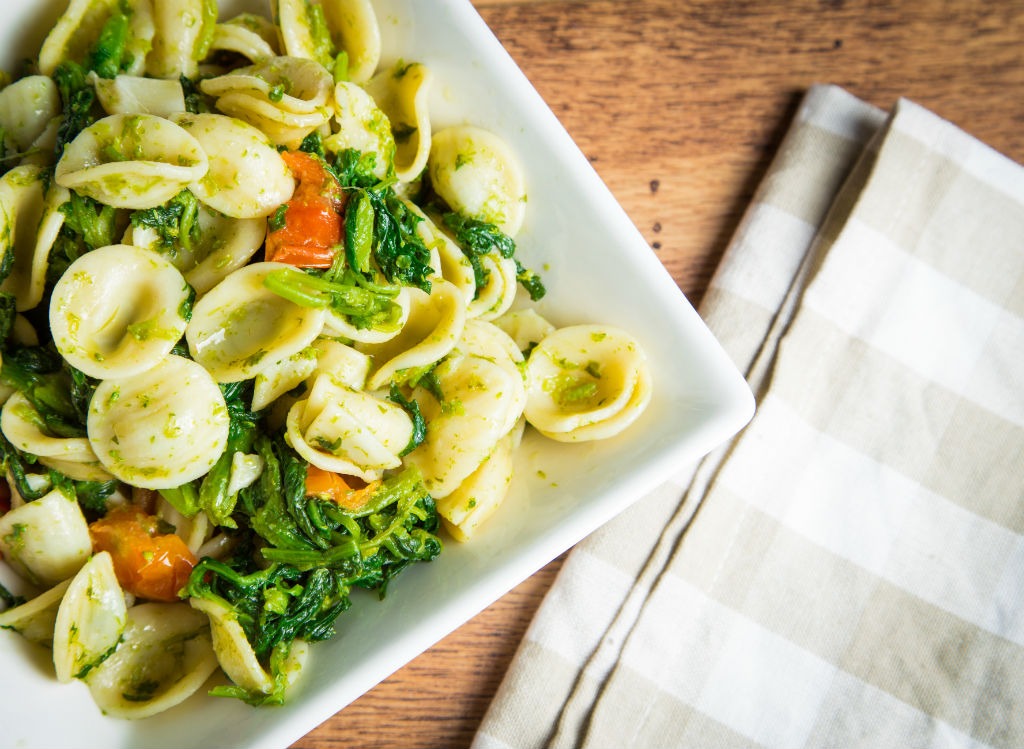
Calcium isn't just good for your bones. Tanya Zuckerbrot, MS, RD, and founder of the F-Factor diet, tells us that "Calcium can promote weight loss because it helps maintain muscle mass, which boosts and helps maintain metabolism, helping you burn calories more efficiently throughout the day." Because we know dairy isn't everyone's go-to, why not check out these 20 Best Calcium-Rich Foods That Aren't Dairy to get your fix—we're big fans of broccoli rabe!
Eat More Appetizers
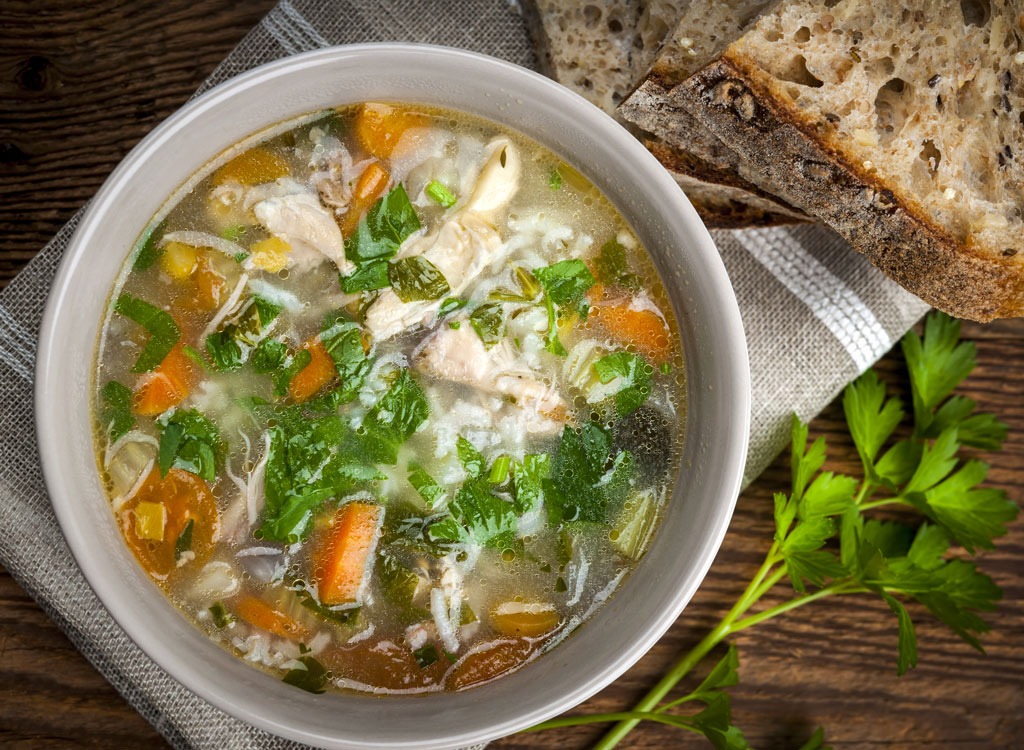
While it may seem counterintuitive, eating something before you sit down to your meal can significantly reduce the number of calories you consume overall. No need to take our word for it. Science concurs: A Penn State University study found that eating an apple before sitting down to a meal reduces overall calorie intake by 15 percent! Another study published in the journal Appetite found that enjoying a bowl of vegetable-based, low-cal soup prior to a meal can slash the number of calories consumed during your lunch or dinner by 20 percent.
Grab Some Greek Yogurt
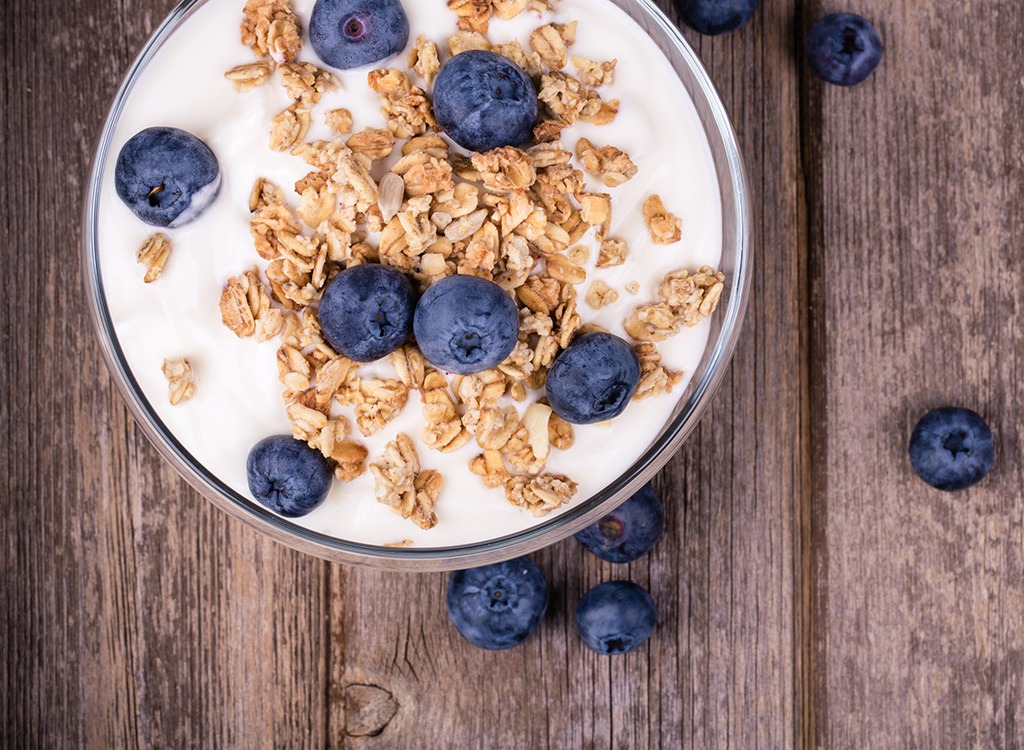
Leave the Doritos in the vending machine. Instead, bring a carton of Greek yogurt to work to curb cravings for good. Sure, a container of 2% is 10 more calories than the popular bag of chips, but it contains 18 more grams of satiating protein. Top it off with some fresh raspberries to double down on this craving crusher. One cup of the ruby fruit provides 8 grams of satiating fiber and sets you back only 60 calories. The slow-digesting trio of protein, fiber, and healthy fats will save you from heading back for another bag, while the yogurt's probiotics may help you curb flab-inducing inflammation.
Saute Up Some Spinach
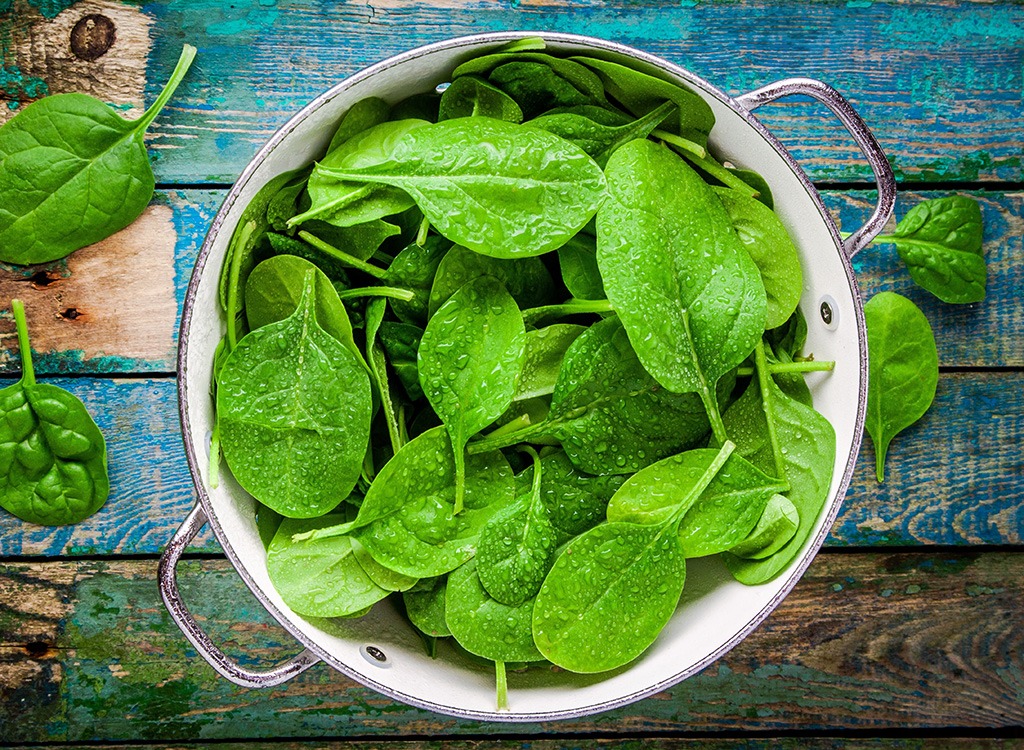
Grabbing a bag of spinach to saute up as a side, add to your smoothie, or sprinkle into your omelet will help you to quash your food cravings naturally. That's because a recent study, published in the journal Appetite, found that specific compounds present in the membranes of spinach leaves may act as a powerful appetite suppressant. When women drank an elixir made with these compounds, known as thylakoids, it reduced their cravings and helped them lose an average of 5.5 more pounds than the placebo group over the course of three months. Fill up without filling out by adding this leafy green to your salads and stir-frys.
Chill Your Potatoes
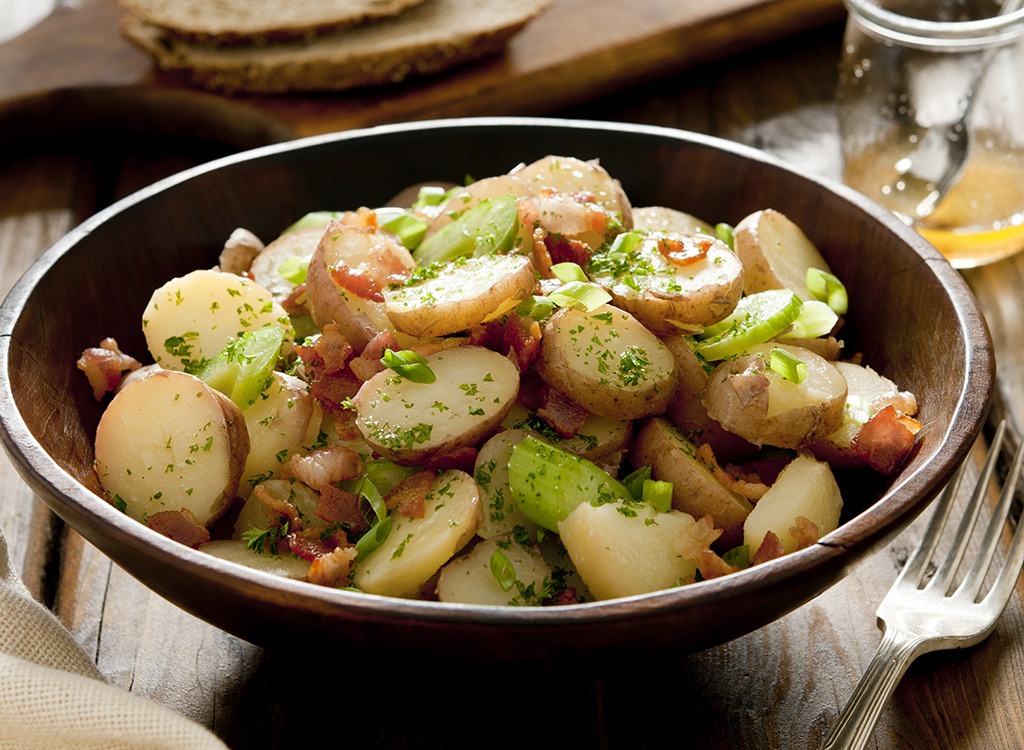
Whoever said potatoes weren't a weight loss food didn't know this slimming trick. When you put your spuds in the fridge after cooking them, their starches go through a process known as "retrogradation." This means they turn into "resistant starch," a class of carbs that passes through your upper gut undigested. Instead, they move down to your large intestine, where they feed your healthy gut bacteria, which leads to prolonged feelings of fullness and the production of anti-inflammatory compounds which help blast fat. So eating more of them means you'll be eating less later on!
Eat Before You Sweat

If you've been doing fasted cardio in an attempt to slim down, you're likely doing more harm to your physique than good. Instead of working out on an empty stomach, eat a carb-laden snack like a slice of whole-wheat toast or a piece of fruit before you lace up your sneakers. Compared to other nutrients, the body burns carbs with the most ease, making it the best source of fuel for your workout—and the harder you can push yourself, the better your results. Plus, when you eat something before breaking a sweat, it can help ward off fat-storing stress hormones that are often released during strenuous, fasted exercise. In short, eating something before hitting the gym can help you get the body you've always wanted.
Sprinkle On Cinnamon
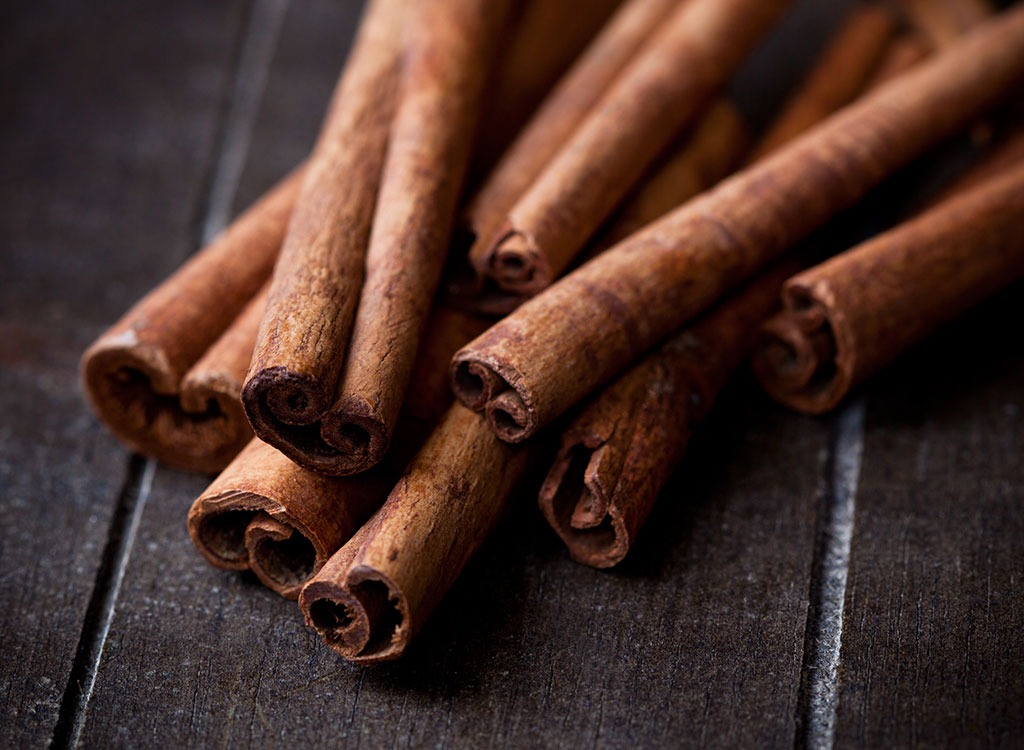
Go ahead, eat that bowl of oatmeal, crunchy cereal, or weight loss smoothie. But here's the catch—just make sure you add cinnamon to your meals. That's because a study in the Journal of Medicinal Food found that this warming spice can help maintain your fasting blood glucose levels. When your blood glucose levels stay constant for longer, your body won't trigger the release of the hunger hormone ghrelin, so you'll be kept from indulging unnecessarily.
Bulk Up Your Salad
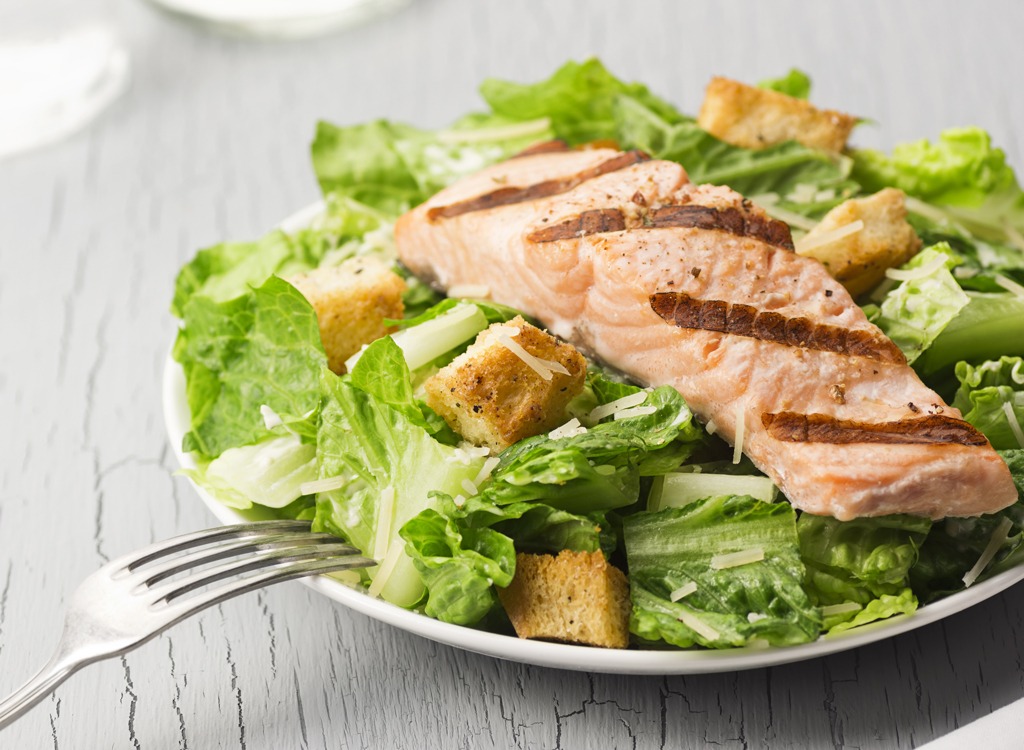
Salads are the classic diet food, but if your bowl is only full of lettuce, you might be doing it wrong. Although greens are packed with vitamins and minerals, if your salad is lacking slow-digesting protein, healthy fats, or fiber to keep you feeling satisfied, you'll be tired and hungry soon after and crave more fuel. And that's exactly what a study published in Nutrition Research found when researchers discovered those who ate a protein-rich meal had a lower response to ghrelin, were less hungry three hours later, and consumed fewer calories for the next 24 hours compared to those who only ate carbs. So go ahead! Pile on healthy fats like avocado or nuts; protein like quinoa, beans, eggs, chicken, or salmon; or fiber like berries or apples.
Add Avocado
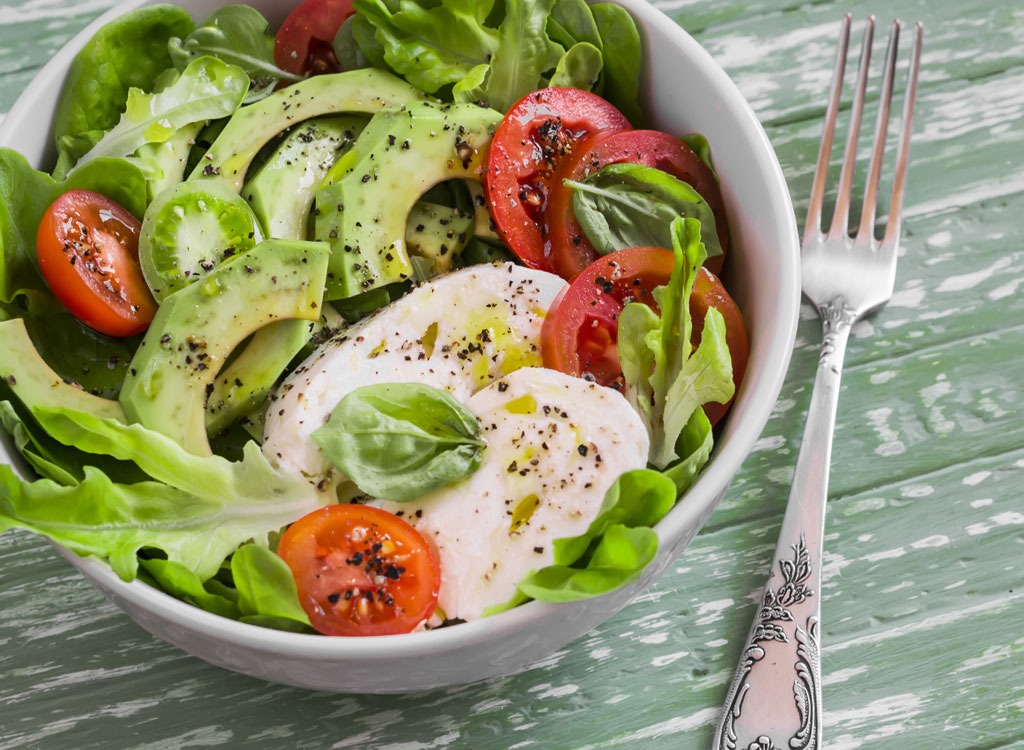
Contrary to what it may seem, eating healthy fats doesn't make you fat. That's especially the case with monounsaturated fat-rich avocados. The fats in this fruit dim your hunger switches and ward off the munchies, according to a study published in the Nutrition Journal. Researchers found that participants who added half a fresh avocado to their lunch reported a 40 percent decreased desire to eat for hours afterward. Oh, and did we mention that these same unsaturated fats can also prevent the storage of belly fat? It's a win-win, as University of Florida researchers recently found that the more belly fat we have, the harder it is to control our appetite.
Start Crunching
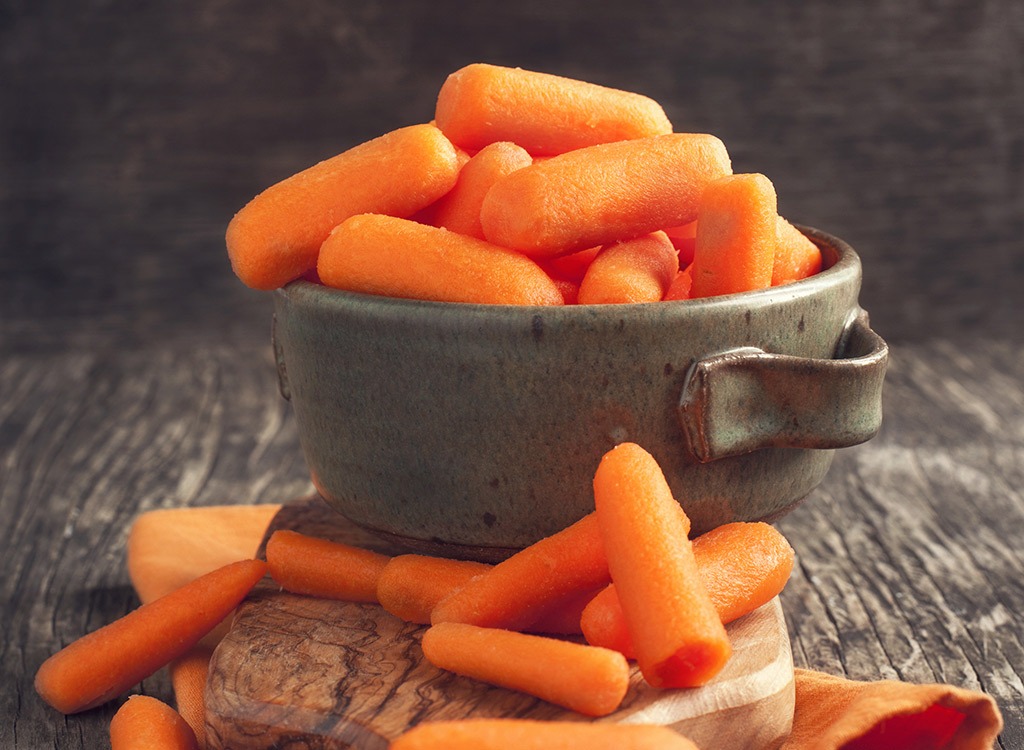
Sorry, smoothie-lovers, your weight-loss drink won't cut it when it comes to eating more to lose weight. That's because smoothies are missing one key satiating factor: a crunch. "Crunchy vegetables, like carrots, take a while to chew," says Lisa Hayim MS, RD and founder of The WellNecessities. "When we chew, we allow more time for our brain to signal our bodies that food is coming in. Once this process begins, we are closer to reaching our 'full' point. Eating foods that take longer to chew ensures that we are more aware of our satiety cues."
Focus on Fiber
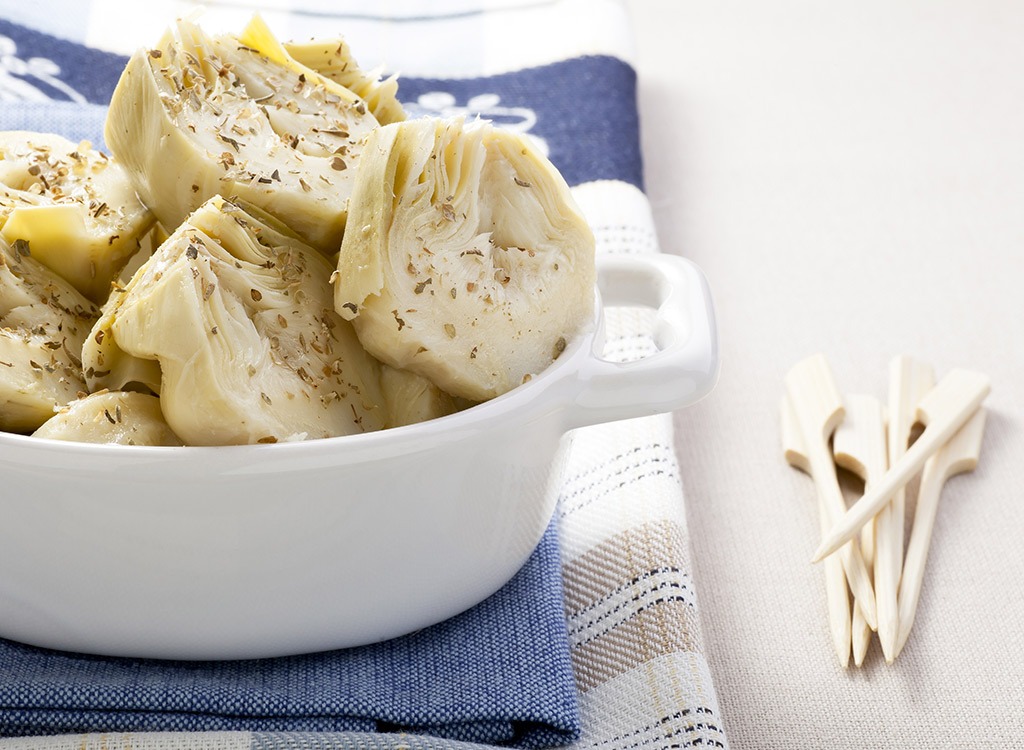
If there's one word you should remember when you're looking to chow down while you lose weight it's this: fiber. "Fiber plus water equals bulk," says Julieanna Hever, MS, RD, CPT. She tells us that "bulk present in your stomach signals to the brain that you're full. Thus, you can eat much more fiber-rich food with fewer calories overall." Plus, this macronutrient also helps your body digest food and absorb sugar more slowly, and that helps you feel even more satiated. That sounds like a go-ahead to nosh on these high fiber foods!
Get Steamy
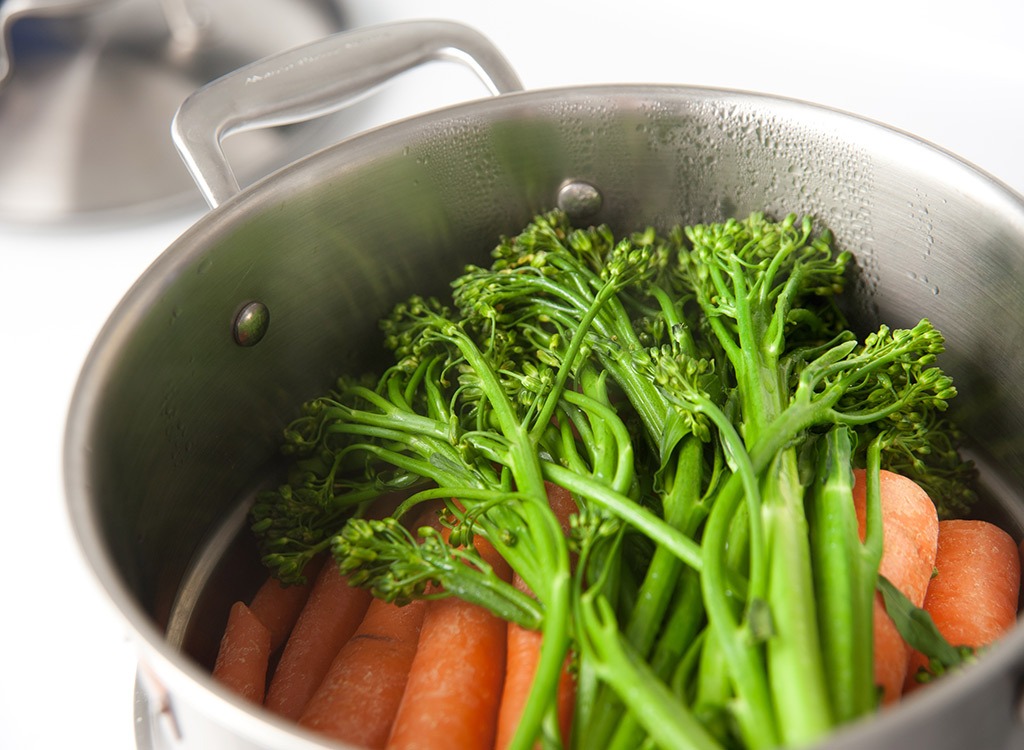
So now that you know you should eat more fiber-rich veggies to keep yourself full, now you just have to know how to prepare them to ensure you'll continue to lose weight. While sautéed veggies are a nutritious side dish, every calorie counts when you're trying to slim down. So while you're eating more veggies, leave the tablespoons of cooking oil in your frying pan to save 250 calories from ending up on your plate. The calorie-free alternative? Steam your veggies. In fact, this preparation technique is one of the ways you can extract the most fat-blasting nutrients from your food.
Pregame with Protein
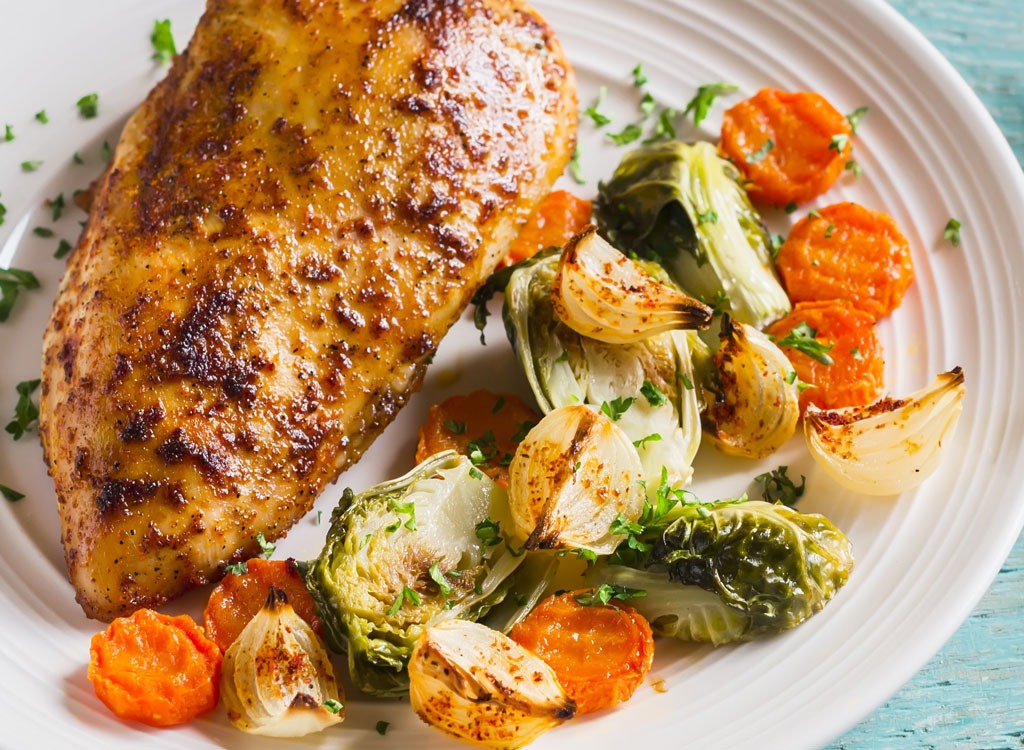
Those days of empty-calorie pizza and pasta are behind you. Or at least they will be when you follow this one tip: pregame your meals with protein. Yep, it's as easy as that. According to dietitian Lisa Hayim MS, RD, "Some studies show that energy from protein is more satiating than that which comes from carbohydrate or fat." She recommends adding a piece of grilled chicken breast or steamed fish fillet to your dish and eating it before touching the carbs on your plate. That way, the protein will help you feel satiated sooner so you won't overeat the fillers like white rice or pasta.
Drizzle on an Apple Cider Dressing

Yes, we know there are some salad dressings out there that are worse than chocolate syrup, but that doesn't mean you should eat your greens naked. Grab a bottle of Bragg's Apple Cider Vinegar and never look back. Adding this elixir to your diet can help you trim down because of its concentration of acetic acid: a compound which a study in the journal BMC Gastroenterology found to both delay gastric emptying and slow the release of sugar into the bloodstream. Both these results work together to extend feelings of fullness and curb cravings.
Round Up SomeRed Peppers
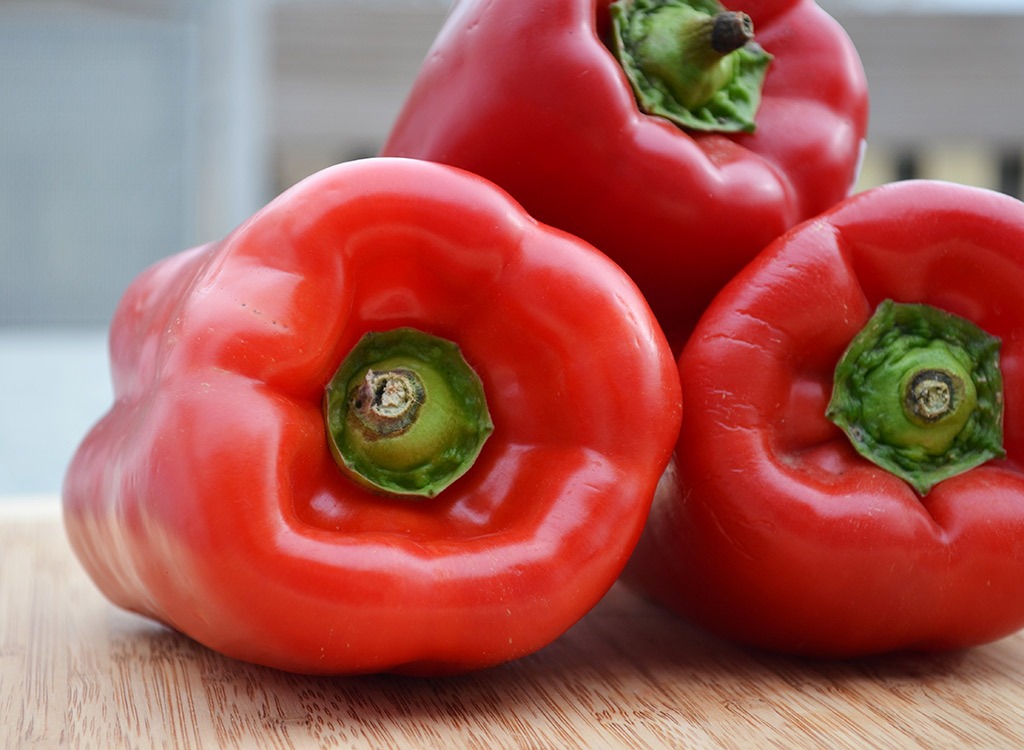
Although a sleeve of cookies may be your go-to after a stressful day, you're better off crunching on a red pepper. That's because red peppers boast the highest amount of vitamin C (three times your recommended daily intake per cup!) in the produce aisle. The vitamin is commonly connected to boosting immunity, but the antioxidant properties of vitamin C also help it fend off cortisol. Because cortisol is a stress hormone that increases fat storage and appetite, snacking on raw slices of pepper dipped in hummus may help you beat that belly bulge.
Munch On Miso
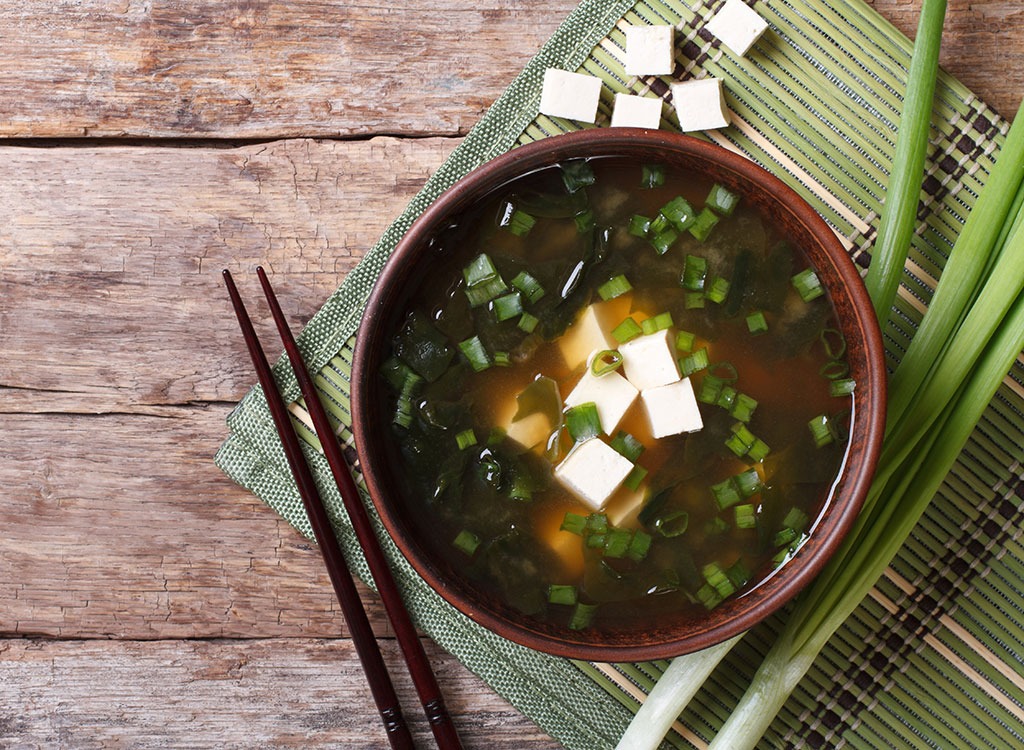
Ever heard of probiotics? If not, here's the gist; Certain fermented foods are teeming with beneficial bacteria which may convey powerful benefits to our gut health when we eat them. By helping to restore levels of good belly bugs, probiotics can restore our gut microbiome: a group of bacteria that lives in our gut and is responsible for everything from controlling our hunger hormones to reducing belly-fat-storing inflammation. And guess what? Miso—made from fermented soybeans—is teeming with probiotics! Add some to soups, use it in a marinade for veggies, or whip up a delicious salad dressing.
Eat Some Chocolate With Your Apple
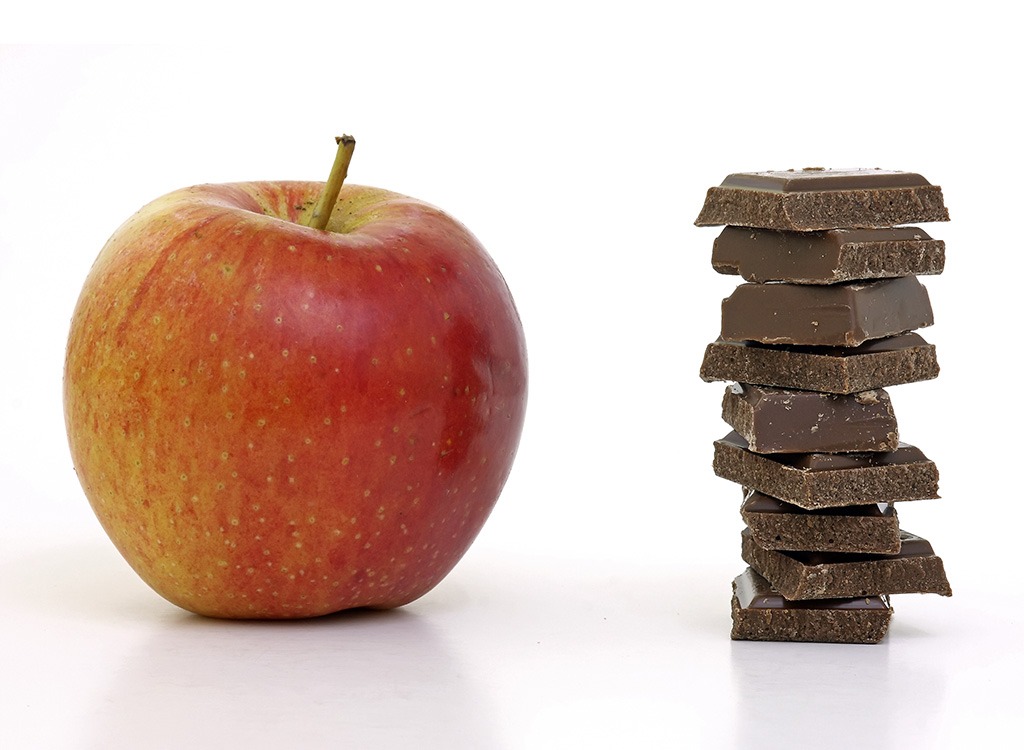
You know an apple a day keeps the doctor away, but did you know there's a way to make it even healthier? Research has shown that pairing an antioxidant-rich apple with prebiotic-rich chocolate can enhance the production of anti-inflammatory compounds that shut down genes linked to insulin resistance and inflammation. Because studies have connected obesity to high levels of inflammation, adding this duo to your diet may help you slim down and help you body adjust to how to lose weight.
Dip Into Hummus
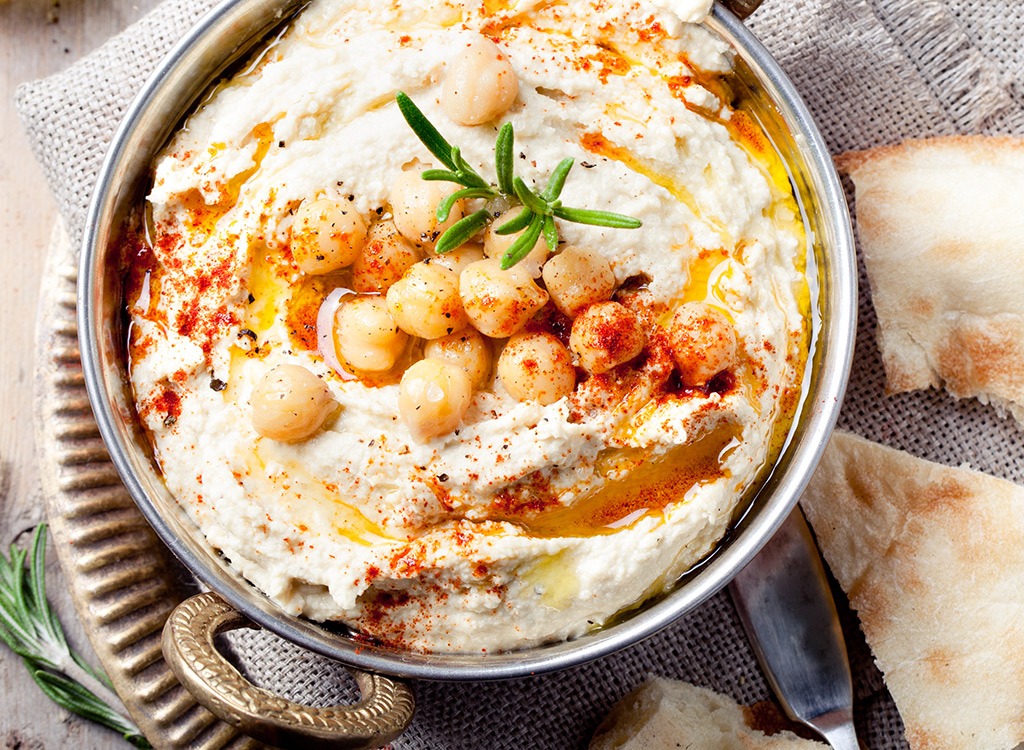
Eat more of this delicious dip and you'll start to see the scale tip in your favor in no time. That's because the Mediterranean spread is made of chickpeas—a type of fiber- and protein-rich legume which has been found to be a powerful appetite suppressor and a key factor in how to lose weight. A recent review, published in the journal Obesity, discovered that subjects who consumed ¾ to 1 cup of legumes daily felt as much as 31 percent fuller than those who left the pulses off their plates. So not only will eating more hummus help you fill up and stave off cravings for that mid-day soda, it will also give you another excuse to eat more filling, fiber-rich vegetables.
Beef UpYour Broccoli
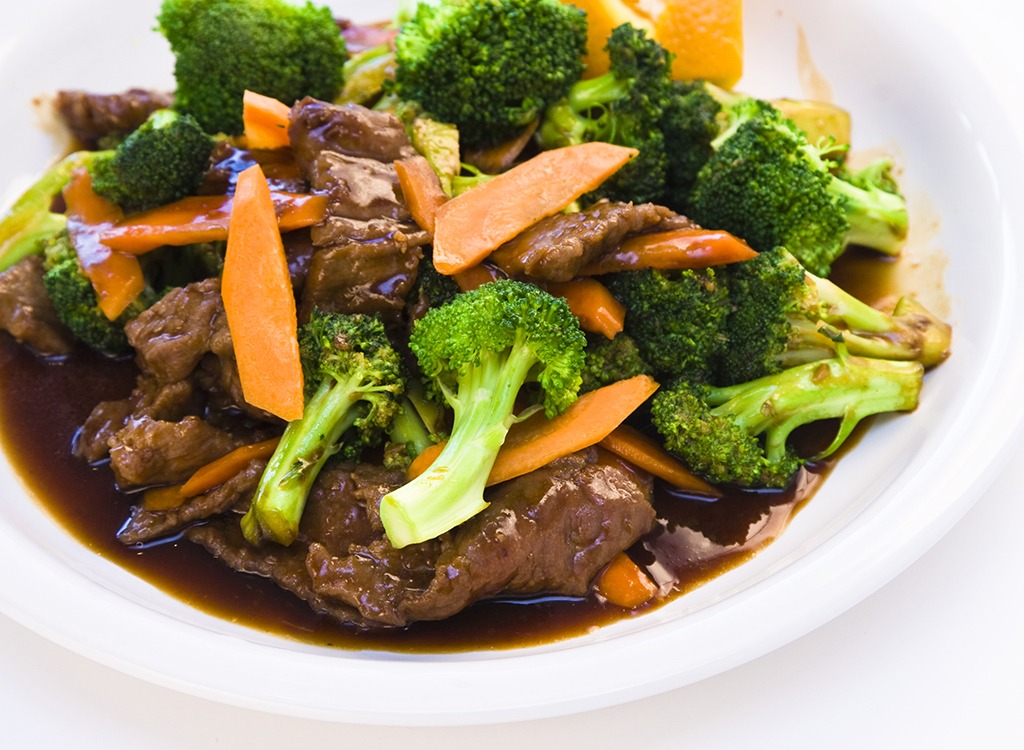
Sure, leafy greens like broccoli, kale, and brussel sprouts are superfoods on their own, but they're even better when paired with your favorite cut of grass-fed beef! Why? Well, beef is a great source of iron—the oxygen-carrying mineral that helps your brain and body to stay energized and keeps your heart pumping—but the fact that a food has iron isn't enough for your body to absorb it properly. That's where broccoli comes in: the vitamin C in leafy greens enhances your body's absorption of iron so you can reap its energizing benefits. Falling prey to an iron deficiency may cause lethargy and debilitating headaches that can stifle weight loss efforts.

